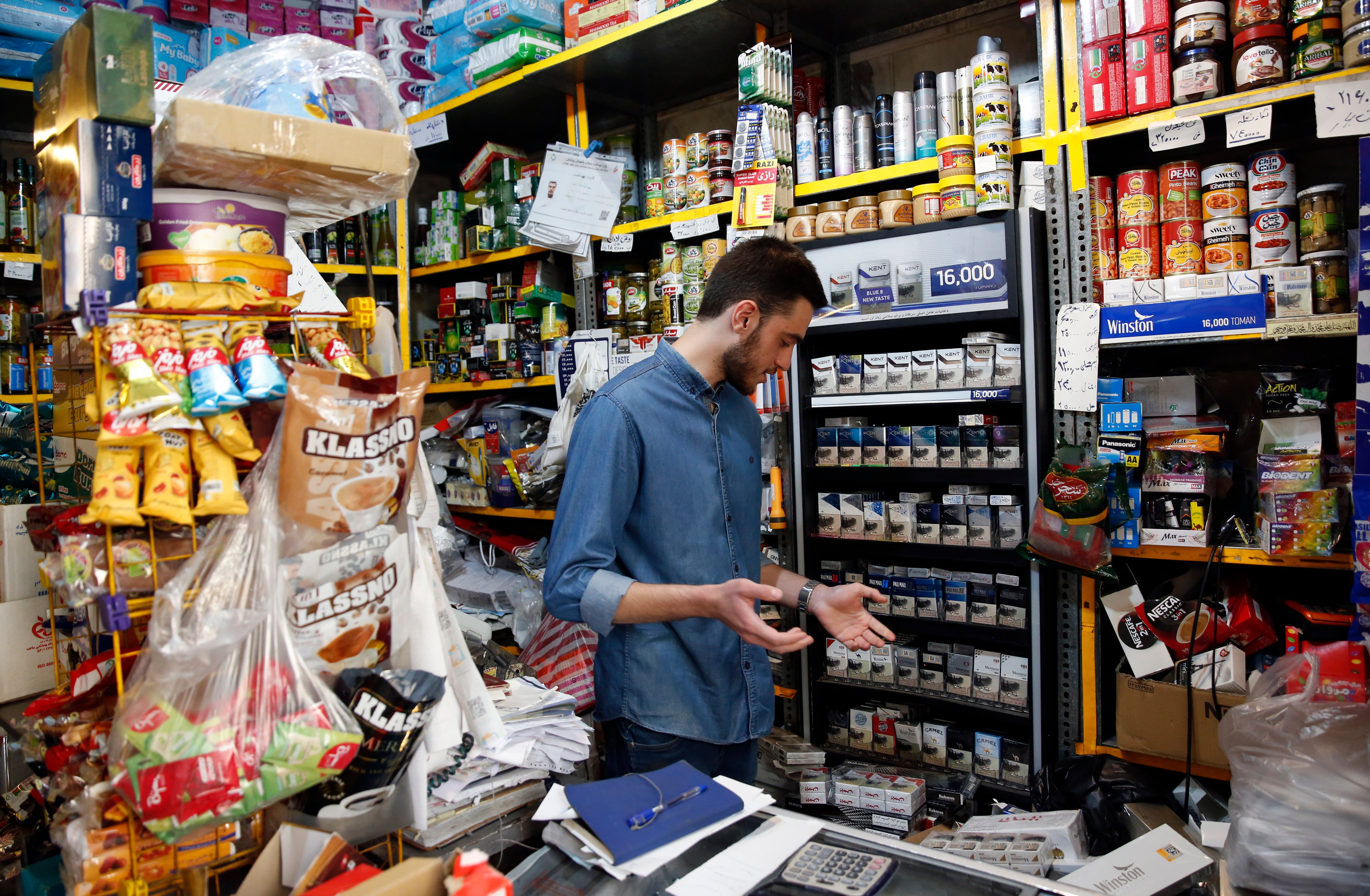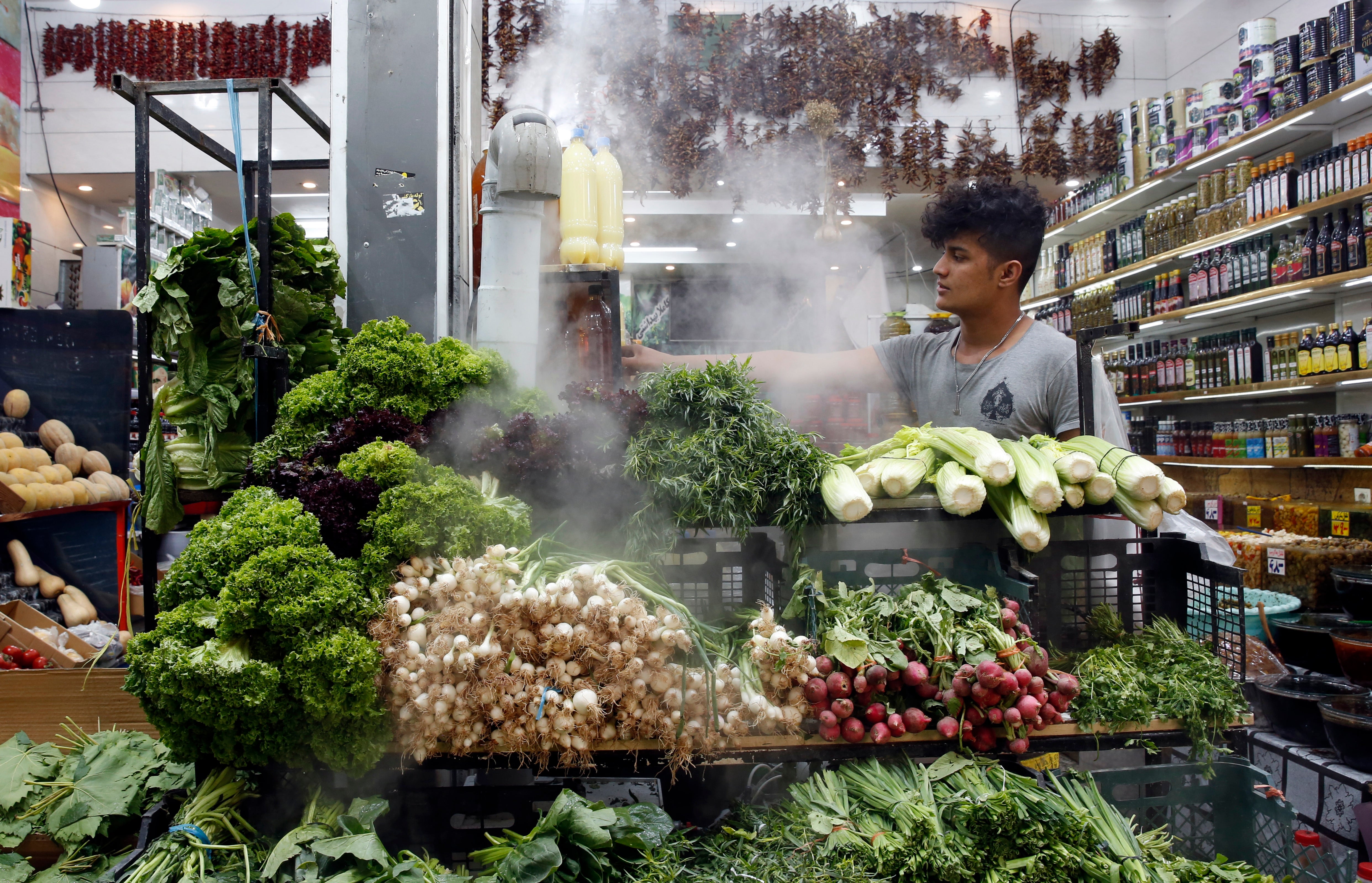‘Death to Raisi!’: Food protests in Iran quickly turn political
Though small so far, the demonstrations come at a particularly sensitive moment for Iran and as fears grow over a looming global food crisis, writes Borzou Daragahi


Iran is being rattled by days of intermittent food and labour protests that quickly turned political and left at least one person dead and others shot and injured.
Videos posted to the internet showed scenes of chaos, with protesters denouncing the clerical regime and president Ebrahim Raissi. They can be heard chanting slogans in favour of Reza Pahlavi, the son of Iran’s last monarch, who was deposed more than 40 years ago. Passing cars honk their horns in solidarity.
Footage also shows police firing into crowds and looters rummaging through a supermarket. Passing cars in the town of Hafshejan, in the southwest, protesters storm the base of the Revolutionary Guards’ volunteer Basij paramilitary, and one man lies lifeless with an apparent gunshot wound.
“Lift him up! Lift him up!” a person can be heard saying in the short video clip.
“Death to Raisi! Death to Raisi!” a large group of protesters chant in the city of Dezful.
None of the footage could be independently verified, but much of it appeared new. Parts of Iran experienced a severe throttling of internet service during the peak of the apparently spontaneous protests, a move in the past has suggested that authorities were seeking to restrict the real-time flow of information about political discord.
Activists say hundreds have been arrested although the government says it has only detained dozens.
On 7 May, Iran’s intelligence ministry arrested two visiting French tourists, education syndicate leader Cecile Kohler and her husband, on espionage charges, accusing them of seeking to support intermittently striking teachers who have been demanding higher wages and liberty for detained colleagues.
“The French government condemns this baseless arrest,” France’s foreign ministry said in a statement. “It calls for the immediate release of these two French nationals and will remain fully mobilised for this purpose.”
The protests, which had spread from the country’s volatile and ethnically Arab southwest to the capital, appear far less sizable than the avowedly anti-regime protests that began in Iran in the closing days of 2017 and resurfaced in the summer months of 2018, as well as protests over fuel prices in 2019 and agricultural water levels in 2021.
But they come at a particularly sensitive moment. They add to the pressures on Tehran following tough negotiations with the US and other world powers. Iran wants sanctions imposed over its nuclear programme removed, while the US wants Iran to curb its atomic technology programme.
They also appear to be the first wave of protests since the inauguration of Mr Raissi, a prodigy of Iran’s supreme leader Ali Khamenei, and have garnered worldwide attention.
“Brave Iranian protesters are standing up for their rights,” US State Department spokesperson Ned Price wrote on Twitter. “The Iranian people have a right to hold their government accountable. We support their rights to peaceful assembly and freedom of expression online and offline, without fear of violence and reprisal.”
The protests began after Mr Raissi’s government slashed wheat, cooking oil and dairy subsidies on 3 May, causing spikes in food prices. World food prices have reached a two-year high following Russia’s attack on Ukraine. The two east European countries are among the world’s largest exporters of food.
Iran’s state television has sought to air the grievances over high prices but Iranian officials have largely downplayed the protests. To soften the impact of the price hikes, Mr Raissi has vowed to increase cash payouts to all but the wealthiest Iranians and distribute electronic coupons to the poor.
Iranians have complained that prices for bread and pasta have more than doubled, while cooking oil has nearly tripled. This comes alongside stagnant wages and skyrocketing inflation that is eating into earnings.

On Monday, an unspecified number of bus drivers protesting in the capital for hire wages were arrested.
Iran’s economy has been battered by mismanagement, corruption by state-backed religious entities, and environmental degradation as well as harsh US sanctions that penalise even third countries that seek to do business with it. The economy was improving following a 2015 accord with the US and other world powers that eased sanctions in exchange for a curtailing of Iran’s nuclear programme.
But under president Donald Trump, the US pulled out of the deal and ratcheted up sanctions, sending the Iranian currency plummeting and the economy into freefall. Though the economy had stabilised, it remained moribund and vulnerable to the recent worldwide price hikes caused by the Ukraine war.
Both the US and Iran say they want to return to the 2015 deal but have deadlocked over Washington’s refusal to remove its designation of the Revolutionary Guard, a branch of Iran’s military, as a terrorist organisiation.






Join our commenting forum
Join thought-provoking conversations, follow other Independent readers and see their replies
Comments